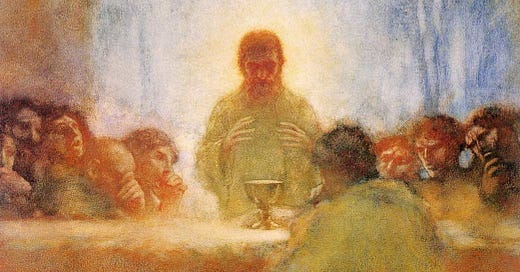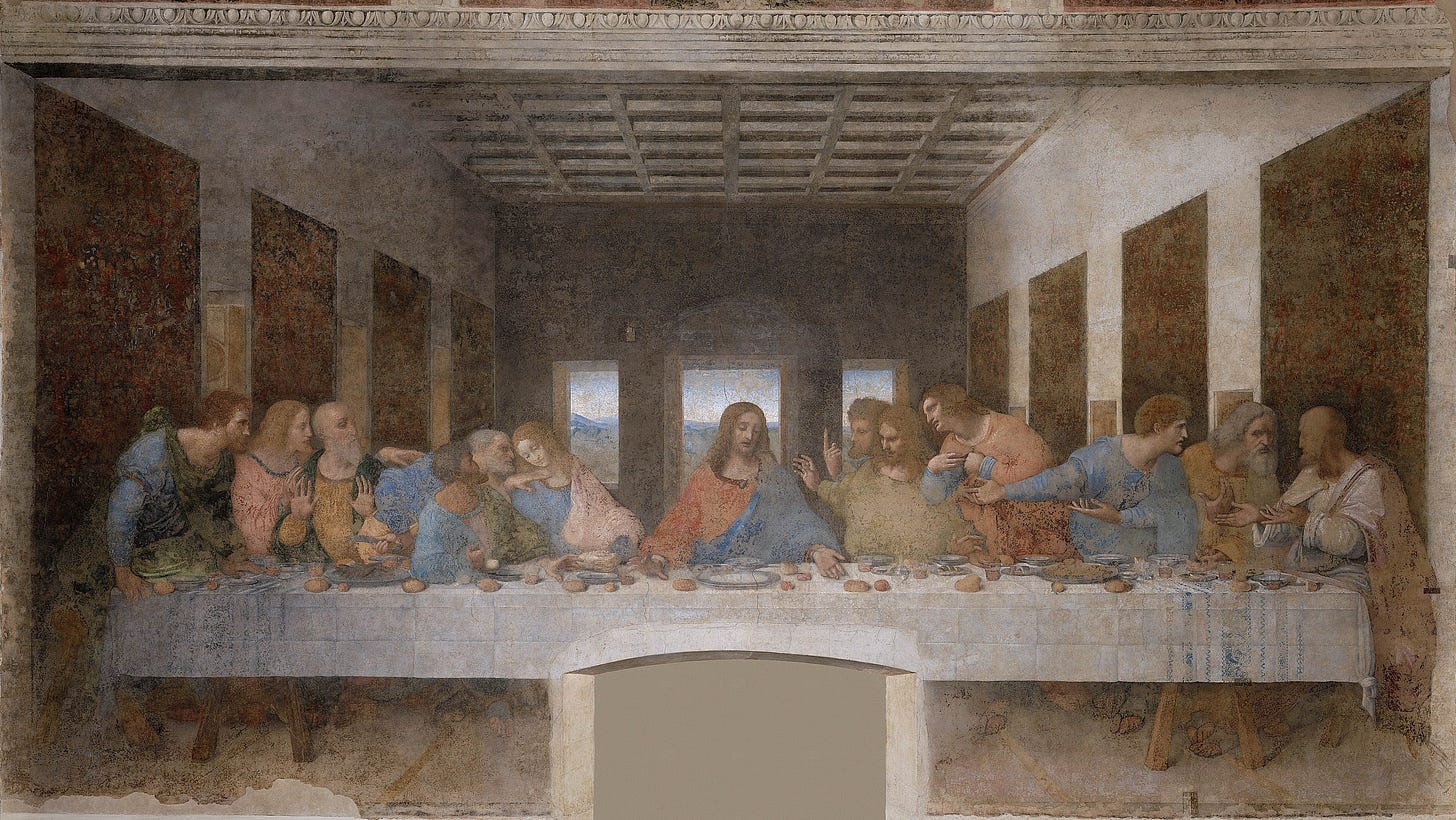There is a version of The Last Supper that is not well known, but is, arguably, a much better version than the famous painting by Renaissance Master, Leonardo Da Vinci.
But first we must discuss…what makes one work of art better than another? To answer this we must consider the purpose of a work of art. John Ruskin argues in his essay “On the Greatness in Art” that the best art is that which conveys the most ideas and in the most potent way possible. This is in contrast to the argument that the best art is that which represents the real world best, because there are so many different dimensions of reality, and most people take “representation” to refer only to the material physical aspects of it.
Quality of representation in art may be considered the standard by which we measure the quality of the artwork, and by extension, compare two different works of art against each other, if we consider representation of all aspects of reality, or at least, the most important aspects of reality.
The Last Supper is a story in the Bible in which Jesus established the Holy Communion. He told his disciples that he would be betrayed and die but that by drinking wine and eating bread, they could remember the sacrifice he was about to make for them. Instead of wine, however, he poured his own blood, a symbol of the new covenant with God.
Leonardo Da Vinci’s “Last Supper” fresco seems to be superior in its material representation of the event it depicts, but Gaston La Touche captures the spiritual dimension.
Let us compare the two:
This is Gaston La Touche’s version
In the painting, there are no definite shapes or objects, except the chalice in the middle. The background is not well defined except for the window. The disciples are not well articulated, and seem to just be floating heads in space, but with distinct facial expressions. In the foreground, is a figure with his back toward us, and it is impossible to see what expression is on his face. A glow seems to emanate from the centre of the painting outward, like the warmth of a sun. Things are clearest at the centre of this light—the chalice—and become less clear as we move outward.
This is Leonardo’s version:
The place that the Last Supper takes place seems to be a nondescript hall just like in the La Touche version, but it is executed with such perfection in perspective that this becomes a focus of the painting itself. In fact, as a work of art, it is often remembered precisely because of the perfect rendition of perspective in the room.
The body language and faces of the different disciples conveys their emotions in a dynamic and dramatic way. This is very different to the way that La Touche’s disciples are merely floating heads and hands. Some may say Leonardo’s version is superior because it shows a better artistic representation of the physical reality of the men who sat with Jesus. Others may argue that in Leonardo’s version, we are so enthralled with the physical dramatism of each of the disciple characters that we forget the real spiritual purpose of the story, which La Touche’s minimalism brings into sharp attention.
La Touche’s painting puts the idea of the sacrifice, and the communion at the centre of his piece. Everything else only has peripheral clarity. This is a better spiritual representation of the story because it is the main purpose of the story. Whereas Leonardo’s version is more about showing off his skill in perspective and representing body language and anatomy.
There is physical light in painting—that which comes from a physical source such as the sun or a candle—and there is figurative, rhetorical light in painting. This rhetorical light can be the glow of an angel, a halo, a divine presence or simply indicate importance in the narrative of the painting. La Touche’s work, after Caravaggio, includes some of the best examples of rhetorical light and his Last Supper is employs some of the best use of it.
Leonardo’s version is a display of magnificence in an artist’s ability to capture the material reality of the world, whereas La Touche’s version captures the spiritual. The light in Leonardo’s painting is a physical light that illuminates each character only as it makes sense from the natural light in the physical logic of the represented space. Whereas La Touche’s painting does not portray physical light, but rather rhetorical light; it emanates from the chalice in the centre rather than from the window above.
You can’t see any faces in La Touche’s work, only expressions. The characters seem to melt into the boundaries of eachother like in a dream. It is interesting that La Touche places one character whose back it facing us. One can only assume that this is Judas, the betrayer, with his face hidden from the spectator. This is a clever way of concealing the villain in plain sight.
Jesus’s face is also occluded. No one really knows exactly what Jesus looked like so this means sense. In Leonardo’s version, the only thing that marks out Jesus from the others is that he is placed at the centre of the painting geometrically. He is materially at the centre so the eye is drawn to him but there is a question whether a geometric “spotlight” is better than a spotlight made from the light that La Touche paints.
The whole painting is like an imprint of the spirit of the event rather than a detailed depiction of the material reality of it. It is like a poem about a war rather than a detailed textbook description of the battle.
Leonardo’s painting is a well-measured and calculated display of perfection in the mathematics of perspective and anatomy. La Touche’s work, however, with its glowing lights and haunting expressions, captures the mystery of the essence of the Bible as well—an ancient text that we can interpret the spirit of, but whose material specifics no one will ever fully know.
Which painting do you think better represents the story of the Last Supper?






Which one better depicts the Last Supper? Depends on how you mean that. I like both paintings very much. I think everyone knows Leonardo's painting, even if they aren't Christian. The La Touche painting is one I've never seen before. I think the differences between the two are a function mostly of when they were painted. In Leonardo's time the goal of the artist was to glorify God with grandiose depictions of biblical stories. The impressionist style of La Touche is much more intimate and conveys a warmth that is lacking in a lot of Renaissance paintings.
So, which one is the better depiction depends on whether you favor something that conveys the grandness of God, or something that conveys the intimacy of the actual event of the Last Supper. Although, one could argue that the focus on the chalice in the La Touche painting accomplishes the first idea, just in a different way. On the flipside, the way the disciples are huddled together around the table in the Leonardo painting offsets the grandness of the room.
Overall, I favor the Leonardo painting, although that may just be out of familiarity.
Thanks for the interesting lesson.
I had no idea. Stuff like this is why i lurv substack.